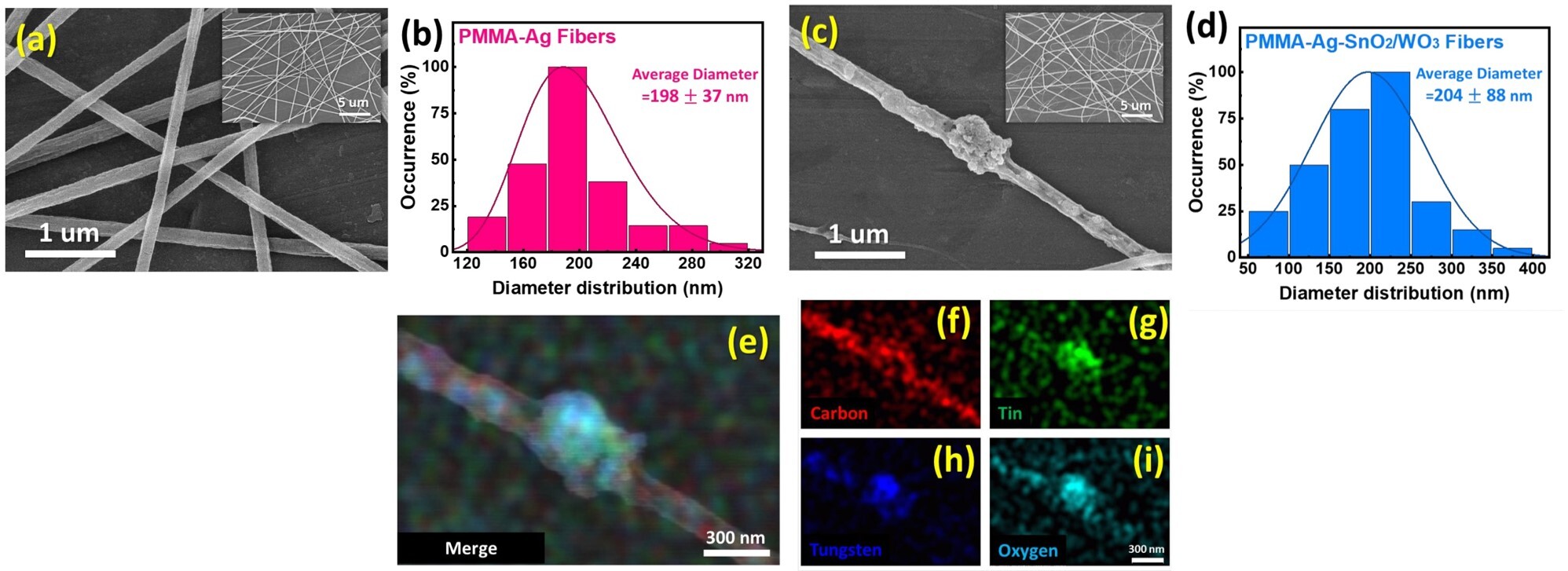Electrospun SnO2/WO3 Heterostructure Nanocomposite Fiber for Enhanced Acetone Vapor Detection


Volatile organic compounds (VOCs), often invisible but potentially harmful, are prevalent in industrial and laboratory settings, posing health risks. Detecting VOCs in real-time with high sensitivity and low detection limits is crucial for human health and safety. The optical sensor, utilizing the gasochromic properties of sensing materials, offers a promising way of achieving rapid responses in ambient environments. In this study, we investigated the heterostructure of SnO2/WO3 nanoparticles and employed it as the primary detection component. Using the electrospinning technique, we fabricated a sensing fiber containing Ag NPs, poly(methyl methacrylate) (PMMA), and SnO2/WO3 (PMMA-Ag-SnO2/WO3) for acetone vapor detection. Following activation via UV/ozone treatment, we observed charge migration between WO3 and SnO2, resulting in a substantial generation of superoxide radicals on SnO2 nanoparticles. This phenomenon facilitates structural deformation of the fiber and alters the oxidation state of tungsten ions, ultimately leading to a significant change in extinction when exposed to acetone vapor. As a result, PMMA-Ag-SnO2/WO3 fiber achieves a detection limit of 100 ppm and a response time of 1.0 min for acetone detection. These findings represent an advancement in the development of sensitive and selective VOC sensing devices.
